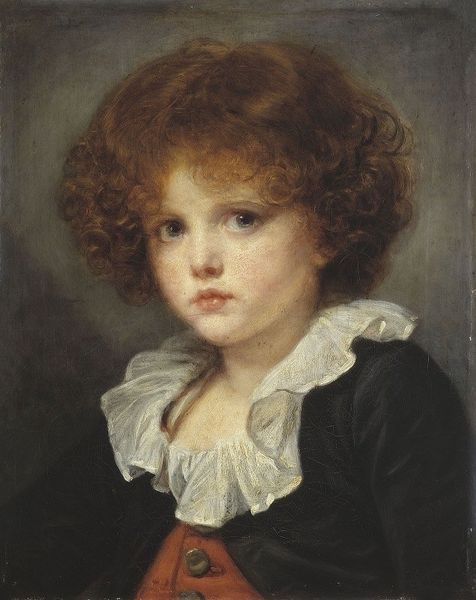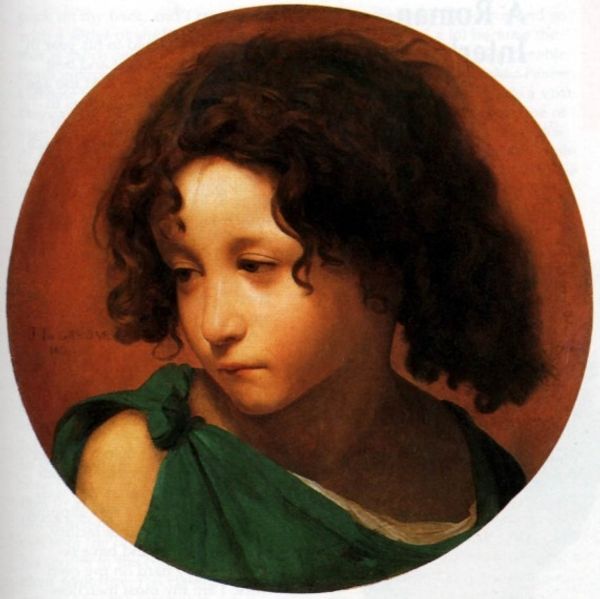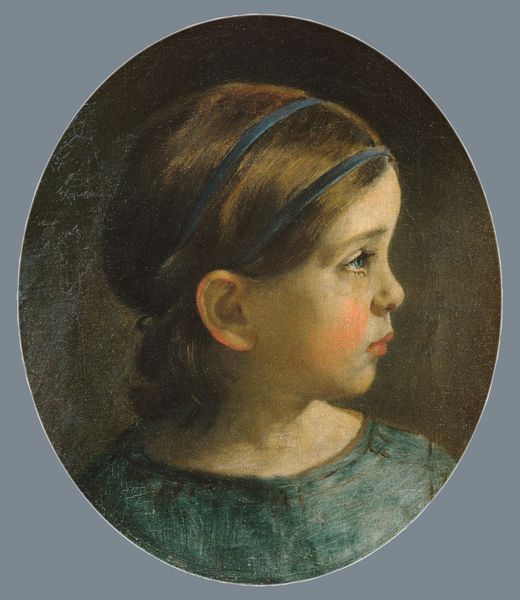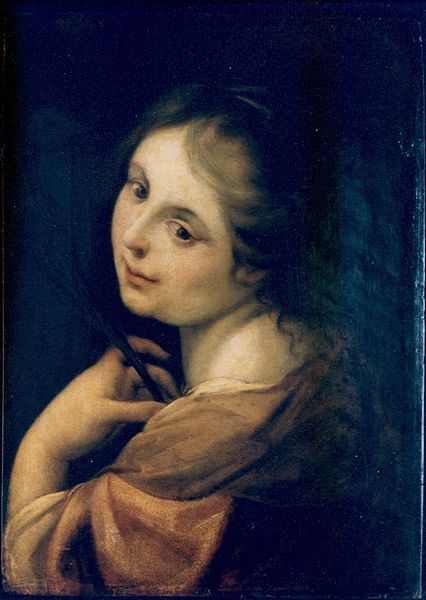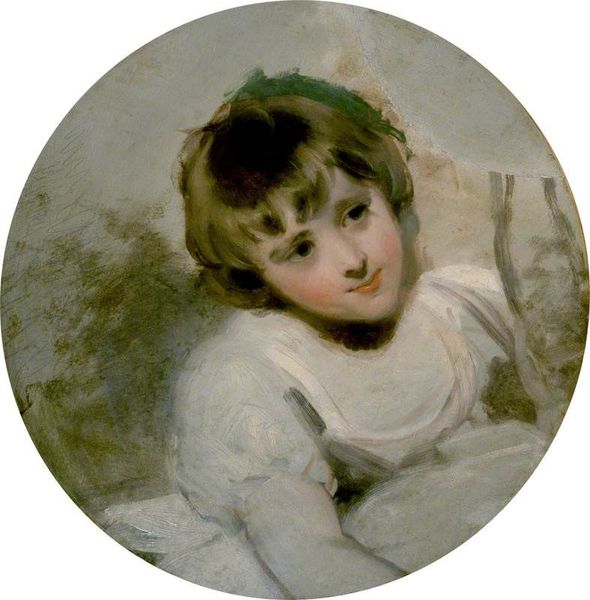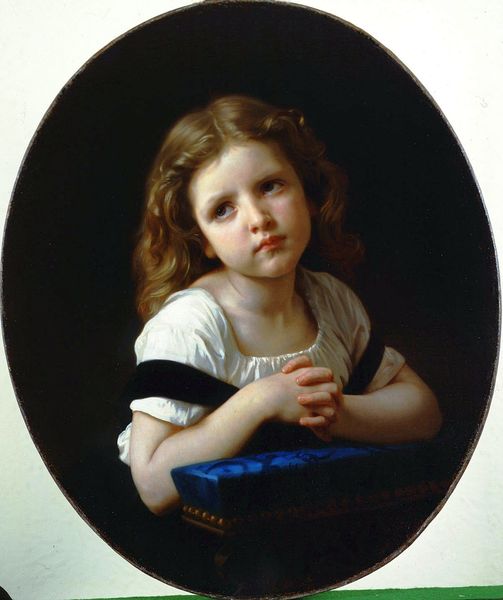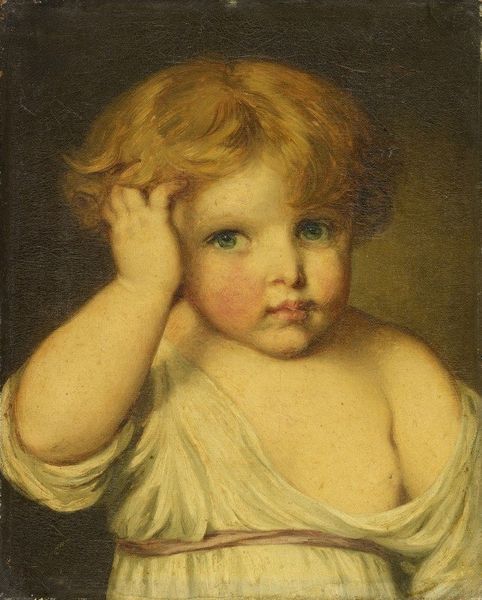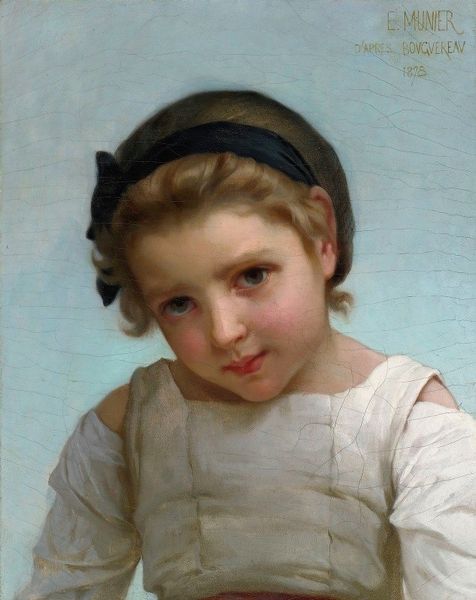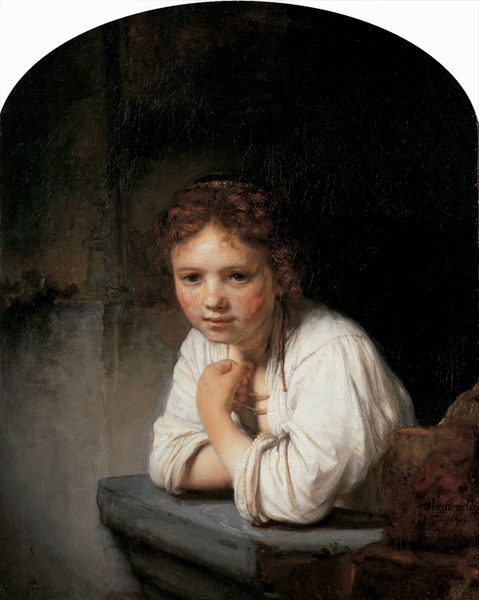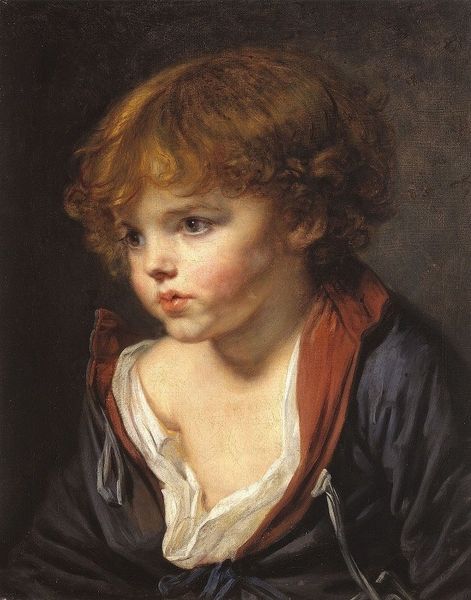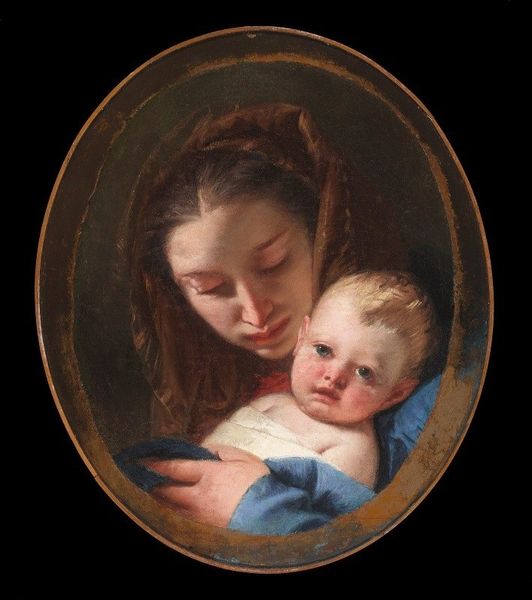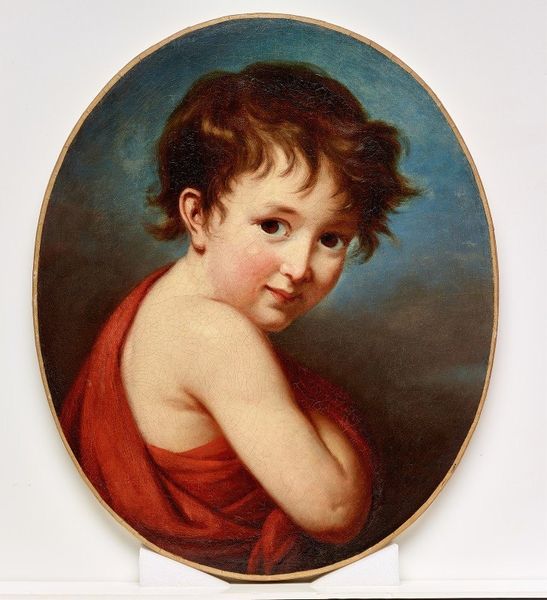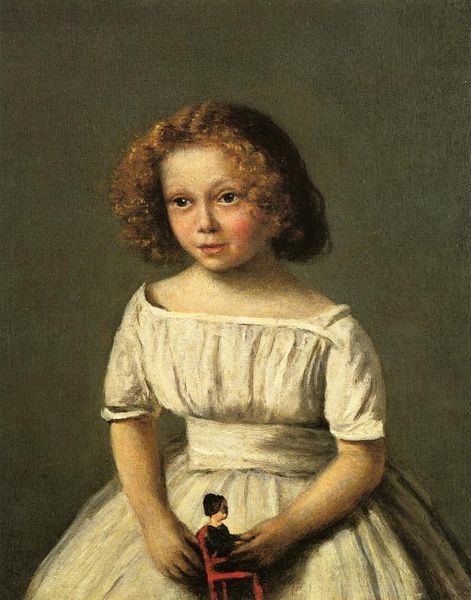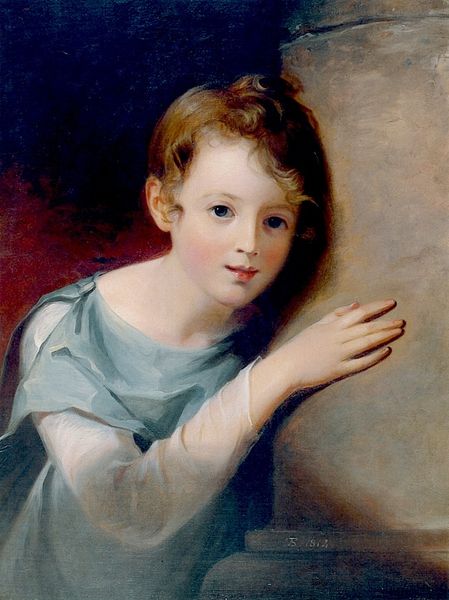
painting, oil-paint
#
portrait
#
portrait
#
painting
#
oil-paint
#
romanticism
#
history-painting
#
academic-art
Copyright: Public domain
Editor: This is Orest Kiprensky's oil painting, "Portrait of Prince E.G. Gagarin as a child," from 1817. The little prince looks very sweet and melancholic, I find it moving that even portraits of children were imbued with such sentimentality back then. What can you tell me about this artwork? Curator: This portrait encapsulates the Romantic era's idealization of childhood innocence while also reflecting the socio-political function of portraiture within the Russian aristocracy. Portraits like these reinforced class distinctions and perpetuated family legacy, serving as status symbols. Note the fine details in the clothing, indicating wealth, and the deliberate staging of the child to convey seriousness beyond his years. Do you see any contrast between his youth and this need to represent authority? Editor: I do! It is very pronounced. It makes me wonder about the purpose and function of painting a child in this style, given the historical context you've laid out. Curator: Exactly. The very act of commissioning a portrait was a political statement. The portrait would also operate as a signifier, communicating wealth, status and social mobility or stability. Furthermore, works like these served the needs of historical narration; consider, for example, how it could contribute to the political aims of rulers who made active choices regarding its circulation and exhibition to shape public opinion. Editor: So it wasn’t necessarily about capturing the child's personality. It was much more about societal presentation. Curator: Precisely. In essence, it performs a public function even at a young age. Kiprensky navigates these complexities through his sensitive depiction, imbuing the child with an element of vulnerability amidst the trappings of power. He seems to ask a lot about who gets to be represented, how, and why. Editor: That’s a different way of looking at this portrait. I appreciate that focus on the historical function alongside aesthetic elements. Thank you! Curator: My pleasure! Recognizing art's role in societal power structures allows us to see these works as much more than just pretty pictures.
Comments
No comments
Be the first to comment and join the conversation on the ultimate creative platform.
